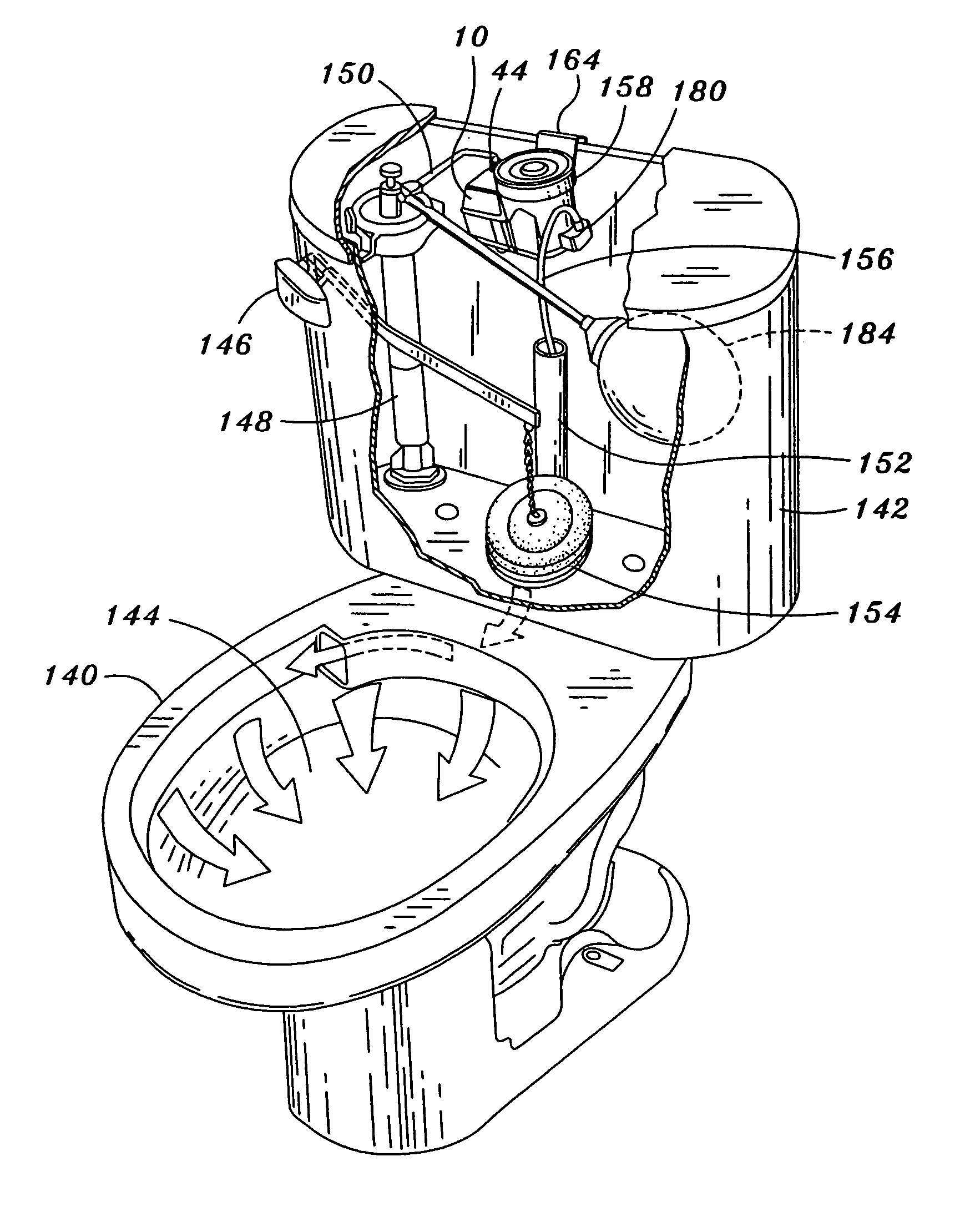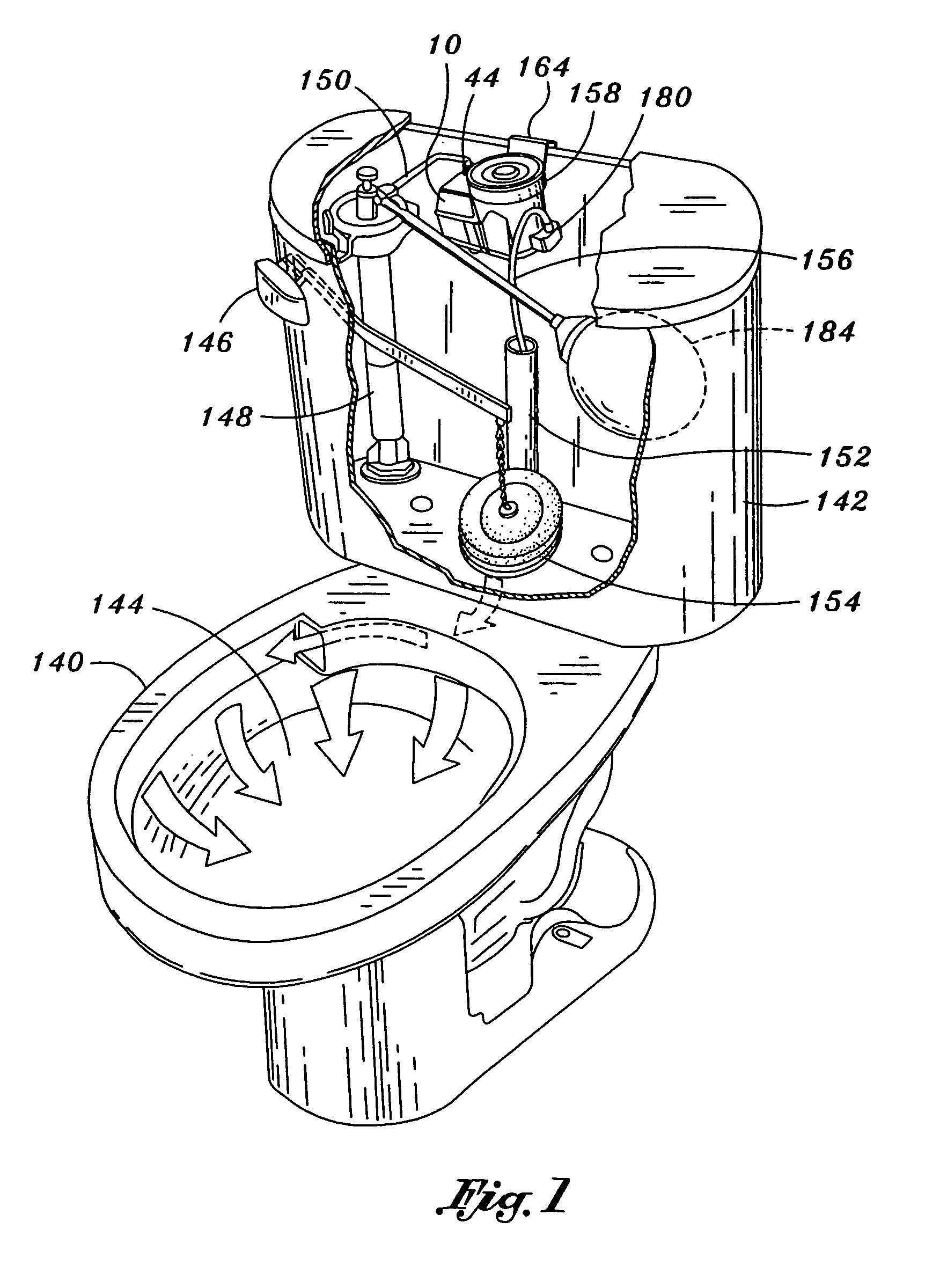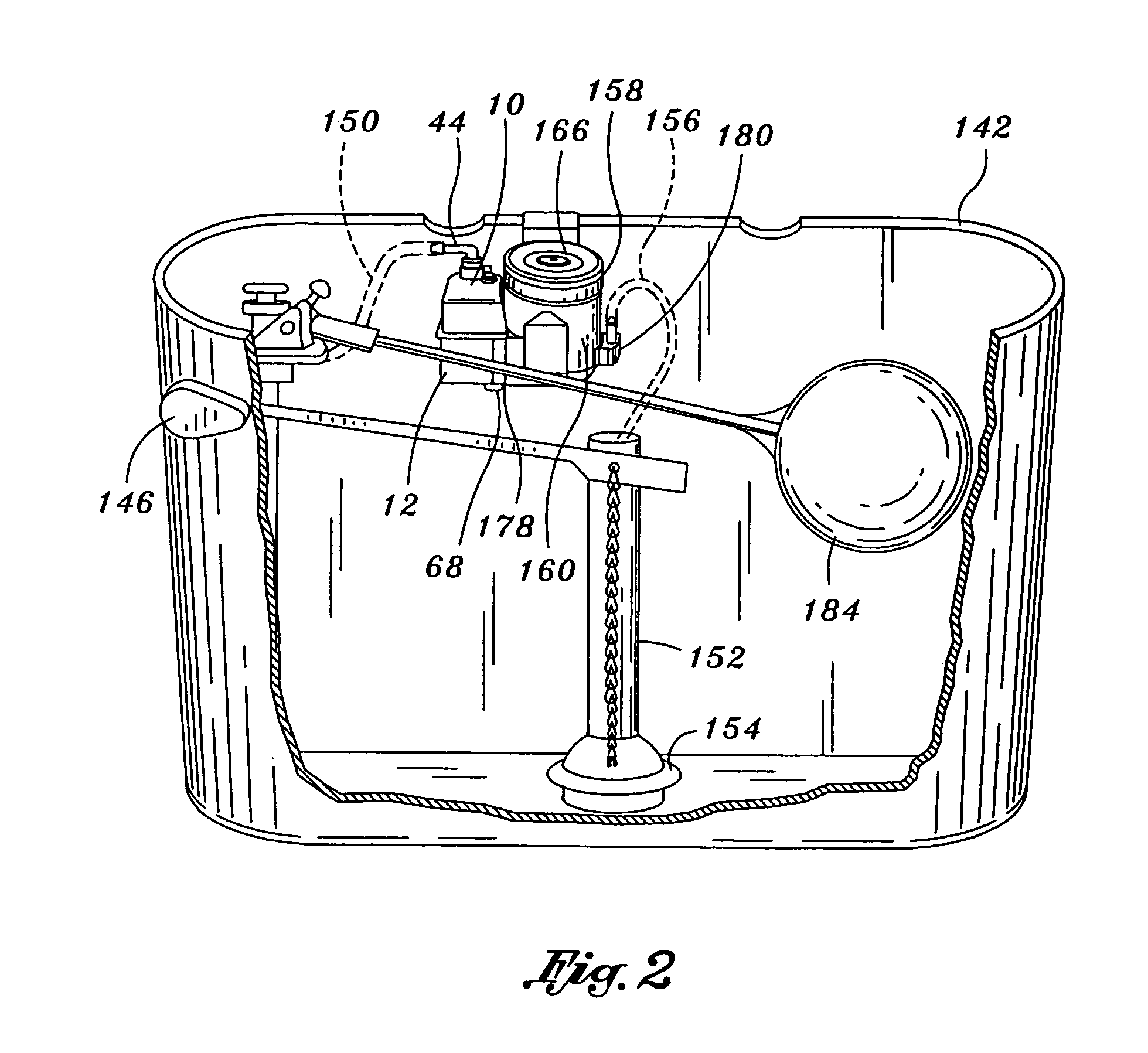Automatic cleaning assembly for a toilet bowl
a technology of automatic cleaning and toilet bowl, which is applied in water installations, lavatory sanitory, construction, etc., can solve the problems of limited time, time delay, and certain chemicals contained in cleaning agents that may have adverse effects on certain parts of toilet water holding tanks, and achieve low liquid flow rate and low flow rate
- Summary
- Abstract
- Description
- Claims
- Application Information
AI Technical Summary
Benefits of technology
Problems solved by technology
Method used
Image
Examples
Embodiment Construction
[0029]Referring now to the drawings wherein the showings are for purposes of illustrating various aspects of the invention and not for purposes of limiting the same, provided is a uniquely configured hydraulic time release system 10 specifically adapted for regulating the flow of liquid therethrough and which is operative to provide a time delay for the release of cleaning agent 174 such as may be used in an automatic cleaning assembly 158 for a toilet 140 or a urinal. The time release system 10 may be specifically adapted to be connectable to the automatic cleaning system 158 although it is contemplated that the time release system 10 may be used in conjunction with other fluidic devices requiring a delay in the release of fluid therefrom.
[0030]Referring now to FIGS. 1–12, shown is the hydraulic time release system 10 of the present invention as may be connectable to the automatic cleaning assembly 158 and which may be installed within a toilet water holding tank 142 of the toilet ...
PUM
 Login to View More
Login to View More Abstract
Description
Claims
Application Information
 Login to View More
Login to View More - R&D
- Intellectual Property
- Life Sciences
- Materials
- Tech Scout
- Unparalleled Data Quality
- Higher Quality Content
- 60% Fewer Hallucinations
Browse by: Latest US Patents, China's latest patents, Technical Efficacy Thesaurus, Application Domain, Technology Topic, Popular Technical Reports.
© 2025 PatSnap. All rights reserved.Legal|Privacy policy|Modern Slavery Act Transparency Statement|Sitemap|About US| Contact US: help@patsnap.com



